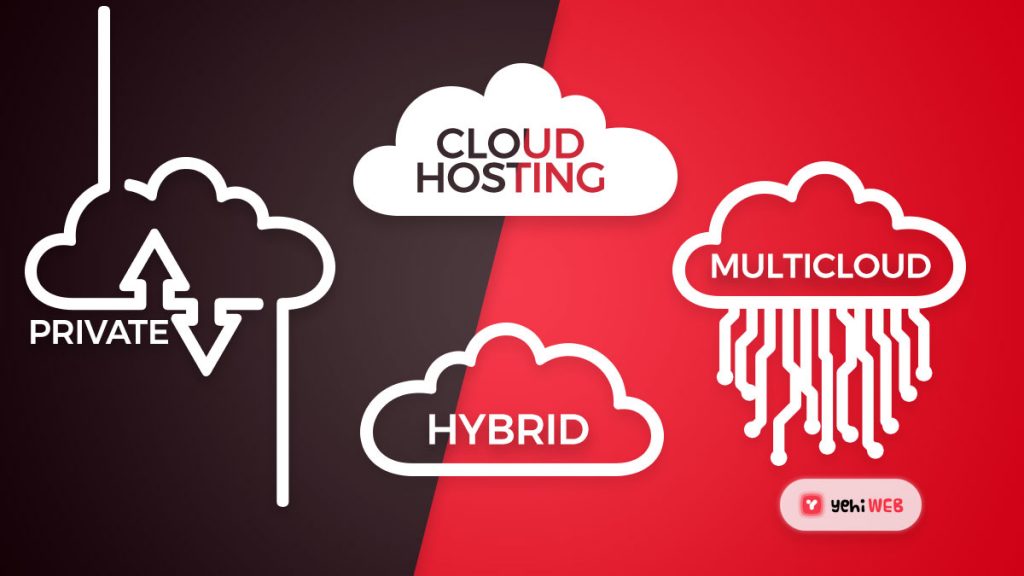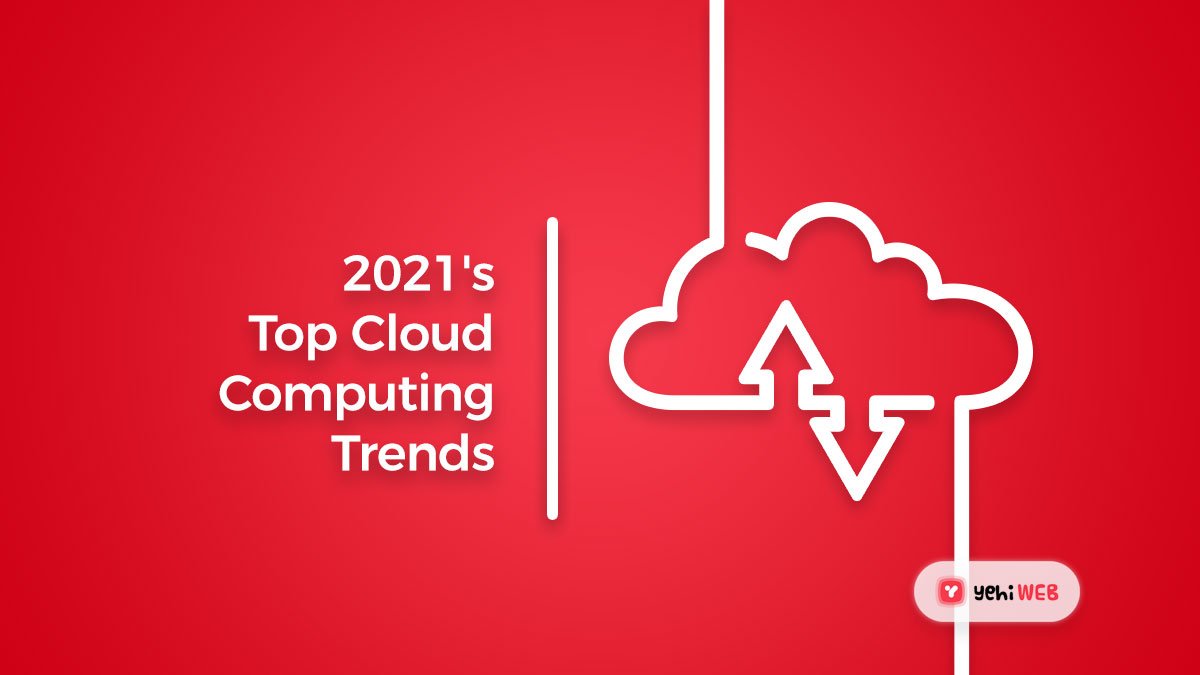Cloud Computing
Are you considering a cloud computing migration for your company and want to know what the latest trends in cloud services, platforms, and infrastructure are for 2021?
In 2021, cloud computing, which supported the global economy, global supply chains, and remote workforces during the coronavirus pandemic, will remain a critical focus for companies looking to increase scalability, market sustainability, and cost-effectiveness.
If the company is planning on creating an application for business, relevant app development cost should always be known.
It’s important to understand the cloud computing trends to expect in 2021, with 94% of workloads expected to run on the cloud. To assist your business in planning for any changes in cloud computing models, we’ve compiled a list of the top cloud computing trends for 2021, as well as how they could impact your company and the tech industry as a whole:
Spike in Cloud Infrastructure Service Market Revenue
According to Forrester Research, the global public cloud infrastructure market will grow 35% to $120 billion by 2021, as the cloud begins to “take center stage” in the recovery from the pandemic.
Despite increased trends in cloud computing, such as IoT and Artificial Intelligence (AI) integration of the Internet of Things, the major innovations have helped companies to tackle the problems posed by the pandemic. This led to a spike in Cloud market revenue of $29 billion in Q12020.
In its “Predictions 2021” report, the Cambridge, Mass.-based market analysis company predicted that “the aggressive move to the cloud, already proceeding at a healthy clip before the pandemic, will spike in 2021, yielding even greater enterprise adoption, cloud provider revenue, and business value.”
According to Forrester, the public cloud computing market will grow by 28% to $113.1 billion next year.
According to Gartner, 75% of midsize and major companies will implement a multi-cloud or hybrid cloud approach in 2021. The trick is to strike the right mix that greatly increases the return on investment you get from your on-site setup and the importance of your cloud integration.
For those who wish to remain competitive by using state-of-the-art infrastructure, OpenStack-powered Managed Cloud Servers will deliver flexible, pre-configured solutions with transparent pricing. Alternatively, a VMware-powered Managed Private Cloud combines the advantages of a standard public cloud with the control, protection, and efficiency of dedicated hardware.
Best of three public Cloud Suppliers
In 2021, the easiest and best of the three public cloud providers will be reshuffled, with China’s Alibaba Cloud displacing Google Cloud to claim the No. 3 revenue position in the global public cloud infrastructure market. And Amazon Web Services and Microsoft are behind No.1, as Forrester has reported.
The company disclosed this month that Alibaba’s cloud computing revenue increased 59 percent year over year to $2.19 billion for the quarter ending September 30 as a result of the accelerated digitalization of industry and companies of all sizes in China. The key growth factors were revenue from customers in the internet, finance, and retail industries.
The revenue of Google Cloud – including revenues from Google’s Cloud Platform (GCP), Google’s Productivity Tools (formerly G-suite), and other cloud services to companies – has risen to US$3.44 billion over $2.38 billion last year in the same quarter.
“In 2021, Google (Cloud) establishes itself as an enterprise-friendly cloud as the work it has put into ERP (enterprise resource planning) workloads, analytics, and account management pay off,”
said Hyoun Park, CEO and chief analyst at Berkeley, California – based Amalgam Insights.
“In 2021, Google (Cloud) establishes itself as an enterprise-friendly cloud as the work it has put into ERP (enterprise resource planning) workloads, analytics, and account management pay off,”
said Hyoun Park, CEO and chief analyst at Berkeley, California – based Amalgam Insights.
“Thomas Kurian (Google Cloud CEO) has had a strong two-year run so far…in translating Google’s technology into defined enterprise products, services, and relationships,” he added.
“This is great news for the business world, as it means that the cloud market is finally less competitive than Amazon vs. the dwarves,” Park said.
According to Park, AWS will aim to progress its operations management services by building on top of communications, messaging, and operations services like Amazon Chime, Amazon Simple Queue Service, AWS Chatbot, and AWS RoboMaker.
“While Amazon Web Services provides the technology to scale, the larger Amazon company has a combination of processes, operations, and logistics that have led to meteoric growth,” he said. “To further grow the AWS business, AWS is in a position to share more of the Amazon core DNA as services and software.”
In the meantime, Park predicted that Microsoft would exceed $25 billion in Azure cloud revenue in the fiscal year 2021, driven by secular market demand for cloud and “partner trust that Amazon and Google cannot match,” and that the company will finally break out Azure revenue in its annual reports.
Edge as the New Cloud
Cloud computing is old. “The Cloud” is arguably the most transformative technological paradigm after the microprocessor for many enterprises. Edge Computing has become the next frontier of creativity and revolution with the introduction of 5G, AI, autonomous systems, and other innovations. In reality “the edge is the New Cloud” is in the center of the market. This transition would initiate a reconfiguration that will include new infrastructure, platforms, and solutions.
According to Forrester, major vendors such as Dell, HP, IBM, and Intel are doubling down on the edge with cloud-like systems that can be deployed anywhere, and content delivery networks and data center colocation vendors are offering edge compute services across hundreds or thousands of local points of presence.
The term “Edge” simply refers to a computing paradigm that optimizes web applications and internet devices by reducing the gap between them and the data source. According to Forrester, components such as rapid 5G rollout, fast AI & ML integration into cloud computing, and other relevant factors would push the cloud to the edge. The ability of the cloud to cross the gap between the cloud and end-users is one of the benefits of edge computing. However, when it comes to maintaining high levels of data security, this may pose a problem.
Cloud Computing Revolutionization by AI and ML
In 2021, AI will be a critical component in bringing the cloud to its maximum capacity. Consider what the cloud, in conjunction with AI, could do with future technologies like smart cities, self-driving vehicles, and automatic health tests, to name a few.
Using cloud computing platforms such as Infrastructure as a Service (IaaS) or Platform as a Service (PaaS), low-budget developers will be able to use the full potential of Artificial Intelligence (AI) to propel the world forward.
Machine learning will continue to be important in keeping data centers working smoothly.
According to Gartner’s “Top Strategic Technology Trends for 2021,” companies need a solid artificial intelligence (AI) innovation approach to ensure that AI projects don’t struggle.
“Most companies will fail to move AI projects beyond proofs of concept and prototypes to full-scale production without AI engineering,” according to Gartner.
According to Gartner, AI projects often fail due to issues with maintainability, scalability, and governance, but a good AI engineering strategy will help improve the efficiency, scalability, interpretability, and usability of AI models while providing the full benefit of AI investments.
“AI engineering is based on three core pillars: DataOps, ModelOps, and DevOps,” Gartner said.
“While DevOps focuses on high-speed code changes, AI projects are subject to dynamic changes in code, models, and data, all of which must be improved. To reap the advantages of AI engineering, enterprises must extend DevOps concepts through the data pipeline for DataOps and the machine learning (ML) model pipeline for MLOps.”
According to Gartner, responsible AI is evolving as an umbrella term for some facets of AI implementations to deal with AI risk, transparency, ethics, fairness, interpretability, accountability, safety, and compliance in terms of governance and AI engineering.

Demand for Private Cloud, Hybrid Cloud, and Multicloud on the rise
The public cloud is ideal for computing, the private cloud is ideal for businesses concerned with classified data, and the hybrid cloud is ideal for those who want the best of all worlds.
According to Park, multi-cloud and joint provider cloud services will continue to emerge next year as providers realize they can partner to accelerate go-to-market launches, capitalize on mutual strengths, and “take on the 800-pound gorilla” that is AWS.
The debate about whether to go private, public or hybrid can never be resolved. In terms of performance, ease of use, data control, and security, all cloud solutions have their charms and poisons. Many companies have discovered the hard way that there is no one cloud solution that can work for all of them, so they’ve adopted cloud deployment models that allow them to do whatever they want.
Many companies will be turning into multi-cloud in the near future as a result of the differences in services provided by cloud service providers.
According to Gartner, 80 percent of consumers can use multi-cloud as part of their cloud strategy.
Next Stage of Evolution: Cloud-Native
The multi-cloud rise is forthcoming. Cloud-native technology will be required to enable the experience that will be brought on by this transition.
Cloud-Native has progressed to the next stage of evolution. What started with the first infrastructure and platform services 10-15 years ago had become an international, integral ecosystem for IT & organizational digital technology. Also in DACH, in the light of infrastructure and application modernization as well as the foundation for digital platform strategies, cloud-native gradually becomes a driver and changer.
The below are some of the elements of the cloud-native technology stack:
1. Containerization
Container management repositories, which are expected to generate $24 million in revenue by 2024, provide the most influence when it comes to cloud-native capabilities. This is due to their ability to execute activities like workload transportation through multiple channels (on-premise, the cloud, and on the edge.)
2. Serverless Computing
After service-oriented architecture and microservices architectures, serverless is the next evolution from monolithic application architecture, according to Derek Swanson, chief technical officer of Silk, a cloud data network that allows businesses to implement a hybrid cloud.
According to the Flexera 2020 State of the Cloud survey, serverless is one of the top five fastest-growing PaaS cloud services for 2020.
Serverless computing, which is expected to be one of the top five fastest-growing Platform as a Service (PaaS) cloud services in 2020, is a cloud model that allows developers to build apps across many clouds from different perspectives.
3. Platforms for orchestration
These platforms, such as Kubernetes, make container management easier across many cloud service providers.
According to Park, when the complexity of managing both the quantity and quality of interconnected services across applications and services overwhelms only the most experienced of IT organizations, cloud platforms will begin to evolve automated cloud orchestration and optimization.
Acceleration of SaaS Adoption
Following COVID-19, enterprises are rushing to implement Secure Access Service Edge or saas.
The concept, not even a year old, was not to take hold until 2024 at the earliest, according to estimates, but the timeline has all but evaporated as businesses face the security needs of the increasingly remote workforce.
According to Derek Brost, director of professional services for security and compliance at InterVision, secure access service edge (SaaS) will continue to gain adoption as companies step past the quick response measures they implemented this year for their huge and unforeseen rise in remote worker connectivity.
SaaS is a network architecture that incorporates software-defined WAN capabilities with cloud-native network security services such as zero-trust network access, secure web gateways, cloud access security brokers, and firewalls as a service, and is primarily delivered as a cloud-based service.
Data security, privacy and regulations, and Cloud Migration
Many of the trends we’ve addressed so far carry with them a whole new wave of creativity and opportunities, but they still pose a significant risk to data security. 33.3% of organizations struggle with cloud adoption due to data security, according to LogicMonitor, IDC. There are many concerns about how the integration of emerging technology such as 5G, serverless computing, edge computing, and others would impact cloud security.
According to Balaji Ganesan, co-founder and CEO of Privacera, a data governance and security solution provider, and co-founder of Apache Ranger, the combination of the coronavirus pandemic and increased cloud infrastructure would create the “perfect storm” for data governance and compliance in 2021.
Organizations will continue to launch projects to ensure secure data migration to the cloud, including encryption of all data provided by the enterprise data governance team before IT or data teams can migrate data from on-premises to the cloud, according to Ganesan.
As a result, cloud service providers are forced to develop advanced mechanisms to ensure cloud data security.
Virtual Desktops: Future of Remote Work
COVID-19 has resulted in a widespread transition away from in-office jobs and into remote work. It’s part of the psychological distancing we’re doing as a group to help stop Coronavirus from spreading. It’s exciting to see others pitching in and adapting to a new way of working. As a company, you’ll want to make sure you’re preparing your workers for success at home by ensuring a seamless transition and supplying them with all they need to operate remotely.
Virtual Desktop
Virtual Desktop is a desktop hosted in the cloud. A computer desktop looks and behaves exactly like the desktop you’d have in your office on a daily basis. However, since it is stored in the cloud, you can access it from any laptop and from anywhere.
A virtual desktop has all of the capabilities of the cloud and can make the transition to remote employment even simpler for employees.
The concept behind this model is to provide our devices with the whole workstation. It not only boosts productivity but also lowers operating costs. This, along with other benefits, makes it possible that this functionality will be implemented in 2021.
Cloud management increased challenges and cost containment
The pandemic reshaped and redefined the cloud, allowing companies to work from anywhere. Many companies became desperate enough to compromise their consumer service and productivity in the pursuit of cost-cutting.
This resulted in a rapid increase in public cloud usage and sales. Forester expects that this trend will persist, owing to the fact that the pandemic’s aftermath will most likely be postponed until 2021. In 2021, revenue from public cloud computing is projected to reach $120 billion (35 percent increase).
In Conclusion
The number of people using the cloud is growing, and it’s just going up. Cloud-based technologies have enabled businesses to be more competitive than they might have been ten years ago. Organizations now have more choices and will be more selective on how they spend IT time and money. Organizations can now extend, respond, and accomplish their business goals easily and without the high upfront costs associated with investing in new technology thanks to the advantages of cloud infrastructure.
Saad Shafqat
Related posts
New Articles
How Much Do Shipt Shoppers Make in 2025?
Thinking about becoming a Shipt Shopper in 2025? You’re not alone. More and more people are looking for flexible side…


